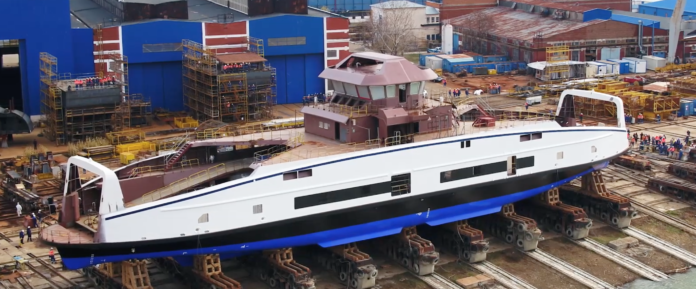BC Ferries has just announced the addition of four new battery electric-hybrid
Island Class vessels to their fleet by 2022.
The contract to build these vessels was awarded to Netherlands-based Damen Shipyards Group, and costs a total of $200 million.
See also: BC Ferries wins innovation award for switching from diesel to LNG
This same company was originally awarded a contract to build the first two electric vessels for BC Ferries, which will be ready for use by January 2020.
These first two Island Class vessels will serve the Powell River – Texada Island route
and the Port McNeill – Alert Bay – Sointula Island route by mid-2020.
Once the four additional vessels are ready in 2022, two of them will operate on the Campbell River – Quadra Island route, while the remaining will serve the Nanaimo Harbour – Gabriola Island route
Meeting environmental goals
“Our Clean Futures Plan spells out our strategy to reduce GHG emissions by replacing our
legacy carbon intensive fossil fuelled vessels with ships using clean energy,” said Captain Jamie Marshall, BC Ferries’ Vice President of Business Development & Innovation.
“These next four Island Class ships are a major step in our plan to progressively lower emissions across the fleet and be a leader in the energy transition to a lower carbon future.”
Now that they will be building four additional electric vessels, Damen Shipyards is extending their contract with Point Hope Shipyards in Victoria to provide localized technical and warranty support for the new vessels.
Island Class vessels are battery-powered, and for the time being, will be operated using an on board low sulphur diesel hybrid system.
However BC Ferries plans to operate these ships using all-electric ferries in the future, once electric charging technology matures to make electricity available in the quantities required for ships.
All six new vessels will have the capacity to carry at least 47 vehicles and up to 300 –
450 passengers and crew depending on configuration.
Here are some highlights of the new vessels:
- Electric power and propulsion systems
- Battery-hybrid power systems improve efficiency and reduces emissions during interim
operations - The exhaust system reduces NOx emissions through selective catalytic reduction
- Twin propellers designed to reduce underwater radiated noise
- Machinery is vibration isolated to reduce underwater and ambient noise
- Designed to be fully accessible without elevators, reducing energy consumption,
operating cost and complexity - Vessel completely outfitted with LED lighting
- Heat recovery system uses waste thermal energy to heat the vessel
- Low friction and biofouling resistant full coating reduces fuel consumption
- Comfortable passenger lounges and solariums for great views along the journey


